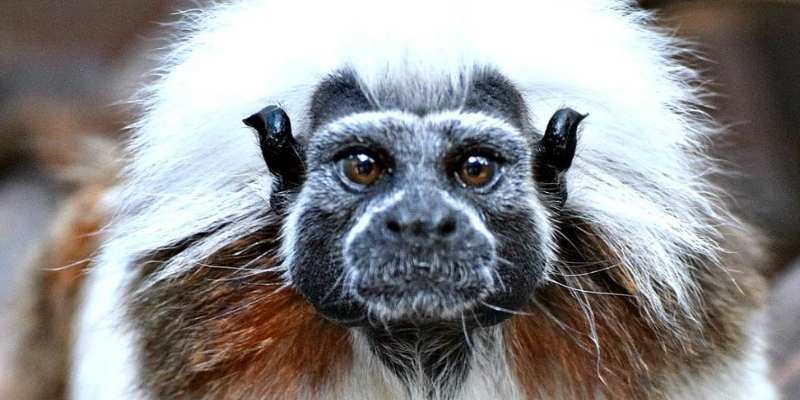The two Juniors who live at Primarily Primates not only have the same name, their vocalizations are known to turn heads.
Cotton-top tamarin Junior, one of PPI’s smallest residents, weighs in at less than one pound. She thinks she is large and in charge though—insisting on being fed first before the other cotton-top tamarins at PPI. If that doesn’t happen she will let you know she’s upset with her loud chirping.
Small-bodied and living in dense vegetation, cotton-top tamarins do not rely heavily on visual signals for communication but are more attuned to chemical and auditory signals. Vocal communication between tamarins serves primarily as group defense, group cohesion, warnings and close contact communication. All cotton-top tamarins and marmosets use "chirp" or "chuck calls" and "slicing screams" during mobbing attacks of predators or intruders or during feeding.
Meanwhile, when another Junior vocalizes, Junior the white-handed gibbon, care staff members say it sounds like he’s singing the bass part in a choir of gibbons.
Gibbons have seven basic vocalization notes they emit in different contexts. These include normal duets (structured vocalizations given by the mated pair usually during the mid-morning or afternoon); "ooaa" duets (similar to normal duets but rarer); calls emitted when predators are seen; in times of alarm; during territorial disputes or conflict; adult male solos (often given early in the day, near dawn or before), subadult male solos, adult female solos (given by mated females when isolated), and contact calls.
We love the when the sanctuary comes alive with the sounds of our residents. Would you consider sponsoring one of our Juniors and give them something more to sing about?



